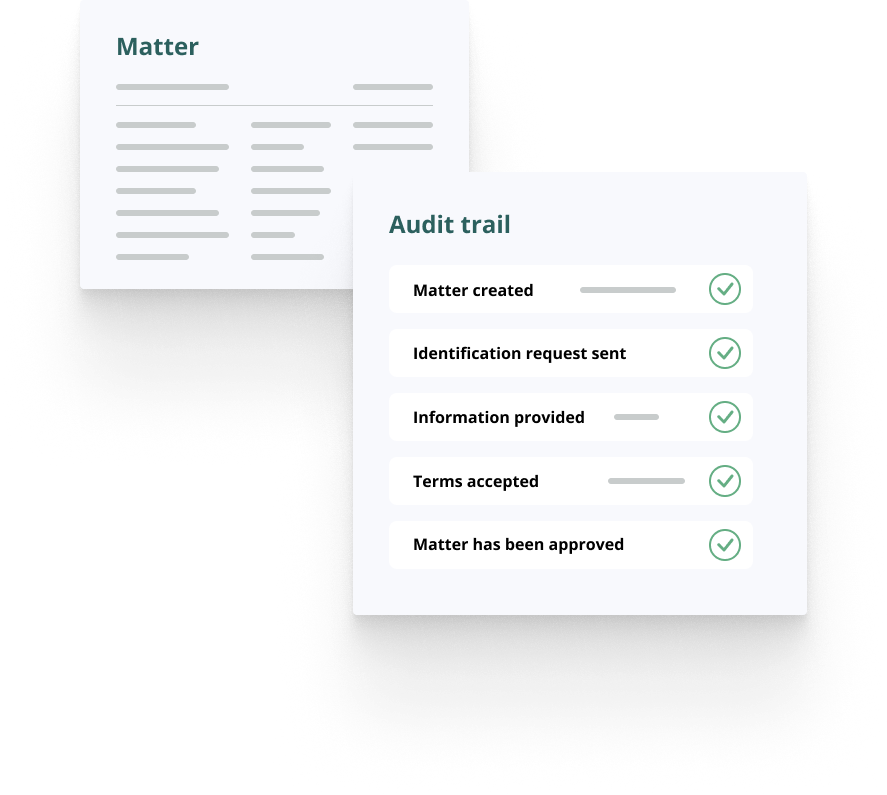- Products
- RegLab for ...
- Knowledge centre
Download the AML glossary >
 Discover the essential AML compliance terminology and gain instant access to a comprehensive guide
Discover the essential AML compliance terminology and gain instant access to a comprehensive guide - The company
Working at RegLab >
Join RegLab as the new Product Owner of our software tool and change the way the legal community approaches anti-money laundering.
There may not be any vacancies that perfectly match your profile, but that does not mean there is no room for someone who can improve RegLab.
- Book a demo
Audit trail: a summary of AML actions
An audit trail is an administrative summary of who did what, when. Useful for yourself and during a supervisor's visit.
What is an audit trail?
As the person with final responsibility, you want to be able to quickly see who has performed which AML actions in a matter. An audit trail provides that overview. It is an automatically generated summary of who did what and when.
Internal communications are also recorded. For example, a message from a secretary to a lawyer stating that the client has provided all the information and asking whether this is approved. You can see exactly who asked whom for what.
When processing a matter, you can see which steps have been taken with a single click. These include sending an identification link, changing a risk profile or obtaining internal approval.
Regulators not only request your matters and documents, but also want to know how you arrived at your decisions. With an audit trail, you have an up-to-the-minute overview of matters and associated evidence at your fingertips.
Maintaining control during inspections
Regulators want more than just documents. They want to know how decisions were made. The audit trail is more than just an overview: it is a substantiation of your decisions. It shows exactly which signals were picked up, who took action and on what basis.
From each action, you can click directly through to the original email or internal message. This allows you to justify your choices in detail at any time. No scattered notes or emails: all information is stored in one central location.
No RegLab? Then it can be a challenge
If you do not have software such as RegLab to automatically generate the audit trail, you will need to rely on a manual form. The disadvantage of this is that it involves manual work, there is no uniformity within the firm, and there is often no central storage. With RegLab, the audit trail is complete, clear, and always up to date.
What can you find in RegLab's audit trail?
RegLab automatically generates an audit trail for each matter. This trail shows exactly who performed which action, when and with what content. The audit trail provides insight into:
- the action performed;
- the employee responsible;
- the date of the activity;
- the details the action.


AML process
Consistency and uniformity are important to the supervisor within the procedures set by your office. He/She wants to see that everyone in the office implements the policy in the same way.





